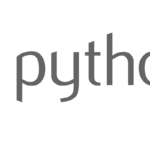Class, Objects, and Exceptions
[01]Which of the following code segments correctly creates a new class named MyClass?
(a)class MyClass() (b)def MyClass: (c)class MyClass{}
(d)class MyClass:
pass
A. d
[02]Which of the following code segments correctly create a new class named MyClass which inherits from the MyParent Class base class?
(a)class MyClass<MyParentClass>:
pass
(b)class MyClass(MyParentClass):
pass
(c)class MyClass: MyParentClass
pass
(d)class MyClass extends MyParentClass:
pass
A. b
[03]Given the following Python code segment:
class MyClass:
x = 7
a = MyClass()
b = a.x
What is the value of b?
(a)None (b)MyClass (c)Error is thrown (d)7
A. d
[04]Given the following Python code segment:
class MyClass:
x = 7
a = MyClass()
b = MyClass
b.x = b.x + 5
c = a.x
What is the value of c?
(a)12 (b)5 (c)7 (d)None
A. a
[05]Given the following Python code Segment:
class MyBaseClass:
x = 7
class MyClass(MyBaseClass):
x = 5
a = MyClass().x
What is the value of a?
(a)7 (b)5 (c)None (d)12
A. b
[06]Given the following Python code segment:
class MyBaseClass:
def myFunction(self):
return 7
class MyClass(MyBaseClass):
pass
a = MyClass().myFunction()
What is the value of a?
(a)0 (b)Error is thrown (c)None (d)7
A. d
[07]Given the following Python code segment:
class MyClass:
x = 7
a = MyClass()
a.y = 5
b = a.y
What is the value of b?
(a)None (b)7 (c)5 (d)Error is thrown
A. c
[08]Given the following Python code segment:
class MyClass:
def __init__(self):
self.x = 5
a = MyClass()
b = a.x
What is the value of b?
(a)5 (b)0 (c)None (d)Error is thrown
A. a
[09]Given the following Python code segment:
class MyClass:
def __init__(self.myNum):
self.x = myNum:
a = MyClass(40)
b = a.x
What is the value of b?
(a)Error is thrown (b)0 (c)40 (d)None
A. c
[10]Given the following Python code segment:
class MyClass:
__init__(self.myNum):
self.x = 5
a = MyClass(40)
b = a.x
What is the value of b?
(a)Error is thrown (b)None (c)40 (d)5
A. a
[11]Given the following Python code segment:
class MyClass
def __init__(myNum):
self.x = 5:
a = MyClass(40)
b = a.x
What is the value of b?
(a)None (b)5 (c)Error is thrown (d)40
A. c
[12]Given the following Python code segment:
class MyClass:
def myFunc():
return 5
a = MyClass()
b = myFunc()
What is the value of b?
(a)Error is thrown (b)0 (c)5 (d)None
A. a
[13]Given the following Python code segment:
class MyClass:
def myFunc():
return 5:
a = MyClass()
b = a.myFunc()
What is the value of b?
(a)None (b)Error is thrown (c)5 (d)0
A. c
[14]Given the following Python code segment:
class MyClass:
def __init__(self):
self.__name = “MyName"
a = MyClass()
b = a.__name
What is the value of b?
(a)None (b)Myname (c)Error is thrown
A. c
[15]Given the following Python code segment:
class MyClass:
def __init__(self):
self.__name = “MyName"
b = a.__MyClass__namme
(a)Error is thrown (b)None (c)MyName
A. c
[16]The __________ method is used as Python’s constructor, which initializes a new object.
(a)__init__ (b)__str__ (c)__module__ (d)__bases__
A. a
[17]The __________ method returns the string representation of an object.
(a)__bases__ (b)__module__ (c)__dict__ (d)__str__
(e)__init__
A. d
[18]The __________ attribute returns a dictionry object representing a key-value mapping of an object’s attributes.
(a)__bases__ (b)__str__ (c)__dict__ (d)__modules__
(e)__init__
A. c
[19]The __________ attribute returns the name of the modules which a function was defined in.
(a)__modules__ (b)__init__ (c)__str__
(d)__dict__ (e)__bases__
A. a
[20]The __________ method returns a tuple of the base classes that an object inherits from.
(a)__modules__ (b)__str__ (c)__init__
(d)__bases__ (e)__dict__
A. d
[21]The __________ method returns True if an object has an attribute with a given name.
(a)isinstance() (b)issubclass() (c)super()
(d)hasattr() (e)type()
A. d
[22]The _________ method returns the class of an object.
(a)issubclass() (b)isinstance() (c)hasattr()
(d)super() (e)type()
A. e
[23]The _________ method returns True if a given class is a subclass of another given type.
(a)issubclass() (b)type() (c)super()
(d)hasattr() (e)isinstance()
A. a
[24]The __________ method returns True if an object is of a given class.
(a)hasattr() (b)issubclass() (c)type()
(d)super() (e)isinstance()
A. e
[25]The __________ method is used to access attributes and methods of an object’s super class.
(a)issubclass() (b)type() (c)super()
(d)isinstance() (e)hasattr()
A. c
[26]Which of the following codes samples correctly instantiates an array of bytes?
(Choose 2)
(a)x = bytearray(“Hello world", “utf-8")
(b)x = bytearray()
(c)x = bytearray()
(d)x = bytearray(“utf-8")
A. a, b
[27]The __________ fileaccess mode opens a file for reading text only.
(a)rb (b)rb+ (c)r+ (d)r
A. d
[28]The __________ file access mode opens a file for reading in binary format only.
(a)r (b)r+ (c)rb (d)rb+
A. c
[29]The __________ file access mode opens a file for reading and writing text.
(a)rb (b)r+ (c)rb+ (d)r
A. b
[30]The __________ file access mode opens a file for reading and writing binary data.
(a)r (b)rb+ (c)r+ (d)rb
A. b
[31]The __________ file access mode opens a file for writing text only.
(a)w+ (b)wb+ (c)wb (d)w
A. d
[32]The __________ file access mode opens a file for reading and writing text.
(a)wb (b)w (c)w+ (d)wb+
A. d
[33]The __________ file access mode opens a file for reading and writing text.
(a)wb (b)w (c)w+ (d)wb+
A. c
[34]The __________ file access mode opens a file for reading and writing binary data.
(a)w+ (b)wb+ (c)w (d)wb
A. b
[35]The __________ file access mode opens a file for appending text only.
(a)ab (b)a (c)a+ (d)ab+
A. b
[36]The __________ file access mode opens a file for appendin binary data only.
(a)a (b)a+ (c)ab+ (d)ab
A. d
[37]The __________ file access mode opens a file for reading and appending text.
(a)a+ (b)ab+ (c)a (d)ab
A. a
[38]The __________ file access mode opens a file for reading and appending binary data.
(a)ab (b)ab+ (c)a+ (d)a
A. b
[39]The __________ built-in IO function opens a given file and returns a file object.
(a)read() (b)open() (c)close() (d)write()
(e)readline()
A. b
[40]The __________ method of the File object returns the contents of a file as a string object.
(a)write() (b)read() (c)close() (d)open()
(e)readline()
A. b
[41]The __________ method of the File object reads a single line of a file and returns it as a string.
(a)close() (b)write() (c)open() (d)readline()
(e)read()
A. d
[42]The __________ method of the File object writes a string into a file.
(a)close() (b)readline() (c)open() (d)write()
(e)read()
A. d
[43]The __________ method of the File object releases all system resources asssociates with the file.
(a)close() (b)open() (c)readline() (d)write()
(e)read()
A. a
[44]Given the following Python expression:
x = 2 ** 3 ** 2
What is the value of x?
(a)512 (b)12 (c)128 (d)Exception thrown
A. a
[45]Which of the following string string literals would read as the following string:
Sammy’s name’s “Sammy"
(Choose 2)
(a)x = 'Sammy’s name’s \"Sammy\"'
(b)x = “Sammy’s name’s \"Sammy\""
(c)x = “Sammy\’s name\’s “Sammy\""
(d)x = “Sammy\’s name\’s \"Sammy\"
A. b, d
[46]Given the following Python code:
x = 0
while x < 5:
x += 1
<YOUR_CODE_HERE>
If you wanted the snippet to print the following line:
1 2 3 4 5
Which of the following lines would you insert into the 4th line:
(a)print(x) (b)print(x, sep="") (c)print(x, “")
(d)print(x, end="")
A. d
[47]Given the following Python code:
a = 2
b = 3
c = a > b
(a)None (b)string (c)boolian (d)int
A. c
[48]Given the following Python code:
a = 0
b = 1
a = a ^ b
b = a ^ b
a = a ^ b
(a)1 (b)Exception thrown (c)0
A. a
[49]Given the following Python code:
for i in range(1, 9, 2):
print(“x")
How many times is “x" printed?
(a)0 times (b)3 times (c)4 times (d)5 times
A. c
[50]Given the following Python code:
a = “20"
b = “100"
c = a < b
What is the value of c?
(a)False (b)True
A. a(Not b)
[51]Given the following Python code:
a = “Hellow World"
b = a[-11:11]
What is the value of b?
(a)Hellow World (b)Exception is thrown
(c)dlroW olleH (d)dlroW olleHHellow World
A. a
[52]Given the following Python code:
a = [1, 2, 3, 4, 5]
del a[0:-2]
What is the value of a?
(a)[4, 5] (b)[1, 2] (c)[1, 2, 3] (d)[1, 2, 3, 4]
A. a
[53]Given the following Python code:
a = [[b for b in range(c)] for c in range(5)]
for each A in a
for each B in reach A:
print(“x")
How many times will “x" be printed?
(a)Exception is thrown (b)5 times (c)25 times
(d)10 times
A. d
[54]Given the following Python code:
x = 5
f = lambda x: 1 + 2 * 5
a = f(x)
What is the value of a?
(a)5 (b)Exception is thrown (c)11 (d)"1 + 2 * 5″
A. c
[55]Given the following Python code:
a = 'Hello’
def f(x)
return s + 'World’
a = f(s)
What is the value of a?
(a)HelloWorld (b)Hello World (c)World
(d)Exception thrown
A. a
[56]Given the following Python code:
a = 'Hello’
def f(x):
return s + 'World’
a = f(“Gooodbye")
What is the value of a?
(a)HelloWorld (b)World (c)Exception thrown
(d)GoodbyeWorld
A. a
[57]Given the following Python code:
s = 'Hello’
def f(s)
return s + 'World’
a = f(“Goodbye")
What is the value of a?
(a)Exception thrown (b)World (c)HelloWorld
(d)GoodbyeWorld
A. d
[58]Given the following Python code:
a = 0
x = 0
try:
a = 1 / x
except ZeroDivisionError as z:
a = a + 3
except Exception as e:
a = a + 5
finlly:
a = a + 1
a = a + 2
(a)3 (b)8 (c)6 (d)11
A. c
[59]Given the following Python code:
class MyException(Exception):
pass:
a = 0
try:
rise MyException()
except MyException as m:
a = a + 3
except Exception as e:
a = a + 1
a = a + 2
What is the value of a?
(a)8 (b)6 (c)3 (d)11
A. b
[60]Given the following Python code:
a = 0
try:
assert a > 0
a = a + 2
except Exception as e:
a = a + 5
finally
a = a + 1
a = a + 2
What is the value of a?
(a)11 (b)6 (c)8 (d)3
A. c
[61]The __________ statement raises an error if a given condition evaluates to False.
(a)raise (b)assert (c)except (d)lambda
A. b
[62]The following code snippet when run:
a = open(“myFile.txt", “w")
a.close()
will(select all that apply):
(Choose 2)
(a)create a new file if myFile.txt doesn’t exist
(b)raise an exception if myFile.txt doesn’t exist
(c)open the file myFile.txt for reading
(d)open the file myFile.txt for writing
A. a, d







Discussion
New Comments
No comments yet. Be the first one!